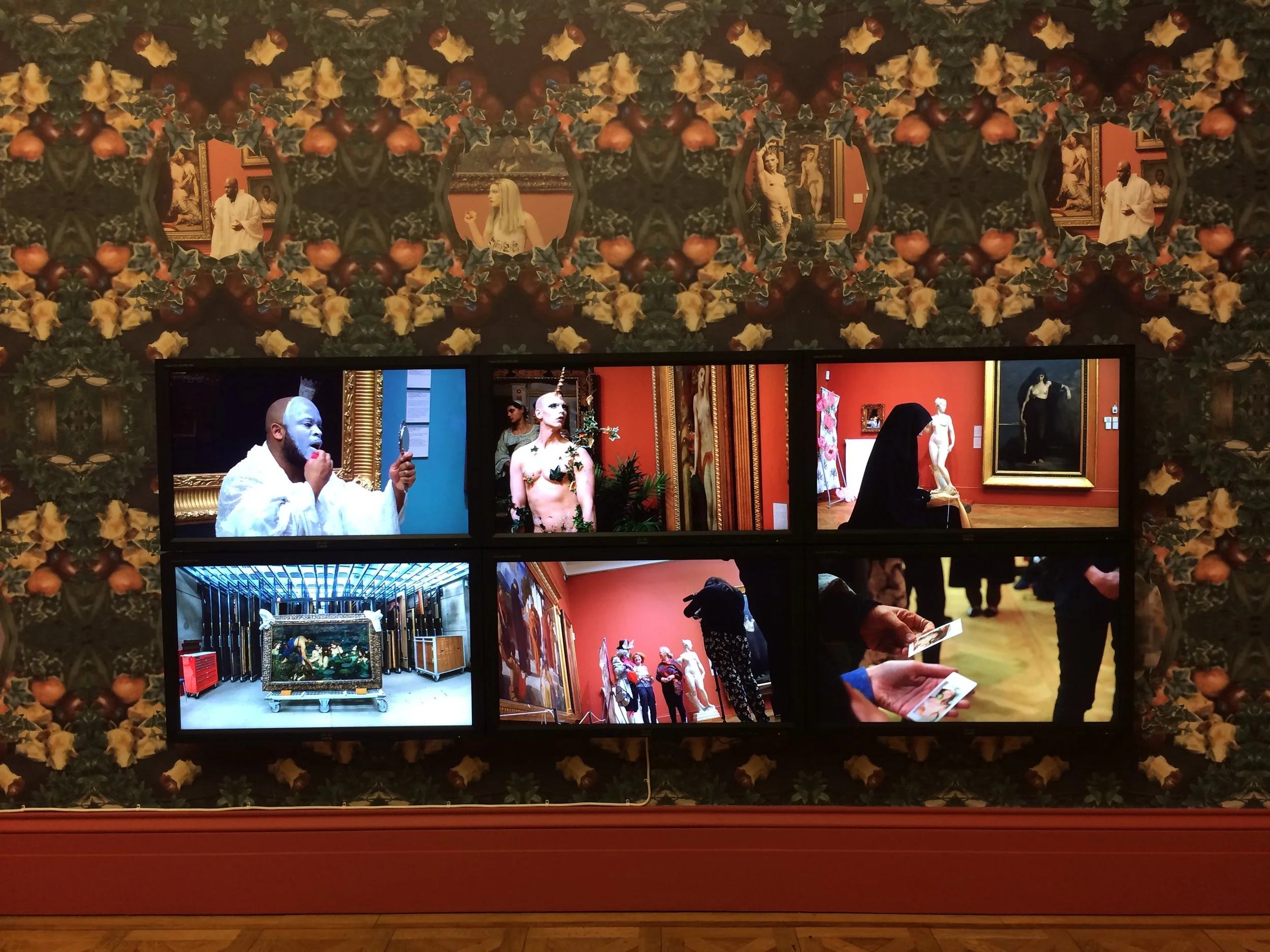
Sonia Boyce, Six Acts
Manchester Art Gallery, 2017-18
‘I have learned to never underestimate the capacity of the group to generate something astonishing’
Sonia Boyce
Photos by Andrew Brooks
Taken from the gallery exhibition text, 2018…
Sonia Boyce worked with the Manchester Art Gallery team, invited artist-collaborators and gallery visitors to make a new commission for the exhibition to explore how the politics of gender, race and sexuality in the gallery’s 18th and 19th century painting displays can be reconsidered for today.
The starting point for the new work was conversation. In Spring 2017 a series of group discussions began between Boyce and members of the gallery team about the gallery collection and how it is displayed and interpreted, particularly displays of 18th and 19th century artworks which have remained the same since the gallery re-opened in 2002. The conversations developed and expanded to include more and more people: gallery staff, volunteers, gallery visitors and artist-collaborators.
As part of this process, in January 2018, an evening gallery takeover took place. Wearing a long white dress, artist Lasana Shabazz performed in response to a number of artworks on display to fictionalise the character of Ira Aldridge, a renowned 19th century Shakespearean actor, stepping out of his portrait Othello the Moor of Venice 1826 by James Northcote. Drag, an acronym for ‘dressed resembling a girl’ and also thought to refer to the weight of a skirt dragging on the floor, is often associated with the Shakespearean period of theatre when female roles were exclusively performed by males. Aldridge was the first black actor to play white roles and would “white up” or paint his face white to play characters such as Macbeth, Shylock and King Lear. As part of his performance Shabazz sang Camptown Races, written by Stephen Foster in 1850 to mock the speech patterns of African-Americans. It later became the basis for a football chant Two World Wars and One World Cup after England won the World Cup against West Germany in 1966.
Contemporary drag artists Anna Phylactic, Cheddar Gorgeous, Liquorice Black and Venus Vienna were invited to respond to artworks of their choice and the title of one of the galleries, In Pursuit of Beauty. One of the six performative acts that night was the temporary take down of a painting, Hylas and the Nymphs 1896 by JW Waterhouse, replacing it with a series of questions and deliberately leaving a space to encourage further conversation. The takeover was filmed and photographed and Boyce has worked with this documentation to create a film installation. Each of the six screens represents an ‘act’ that took place during the gallery takeover: the five performances by invited artists and the temporary removal of the painting.
Boyce often acts as a catalyst for collective action, deciding when and where to set parameters within which a group dynamic comes into play to make things happen. In this case, a group of gallery staff initially came together with Boyce to explore their own responses to outdated interpretation and contextualisation of collection displays at the gallery. These issues and questions have subsequently become more public. With Six Acts, the boundaries of the artwork have become fluid as the film installation sits within an ongoing process for the gallery team and gallery visitors exploring issues of representation and the role of the institution. All the conversations, actions and responses which have come about could be described as part of the work, while also merging with and becoming part of a valuable longer-term process of collective thinking about the role of the gallery and its public collection.
The exhibition Sonia Boyce was supported by Arts Council England and Six Acts was acquired for the MAG public collection with support from Contemporary Art Society





